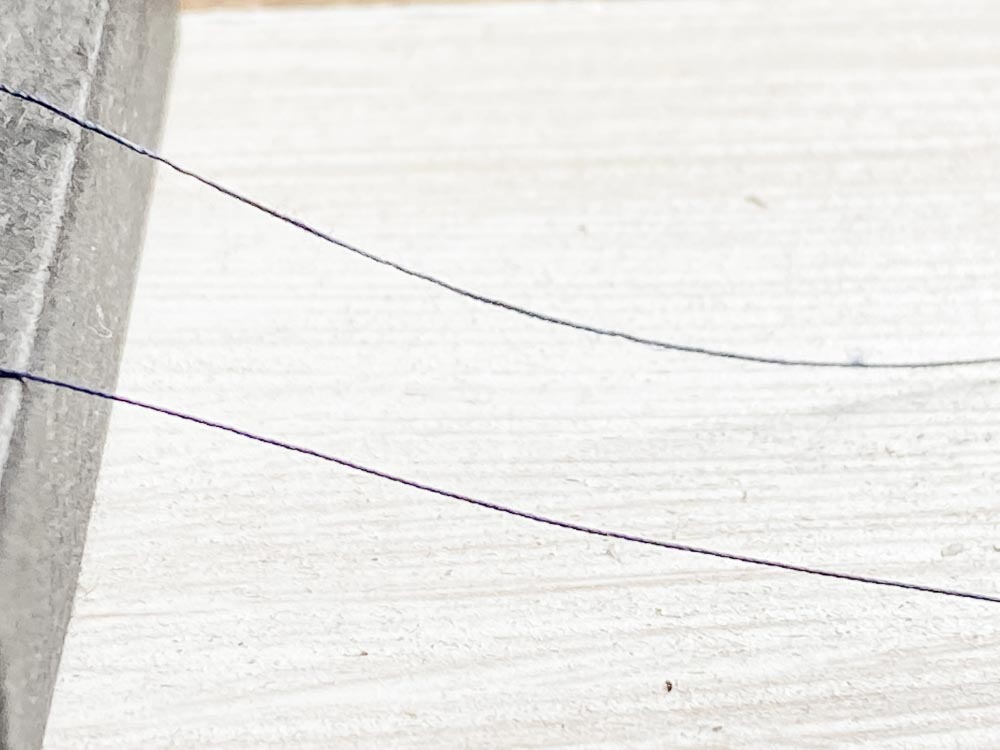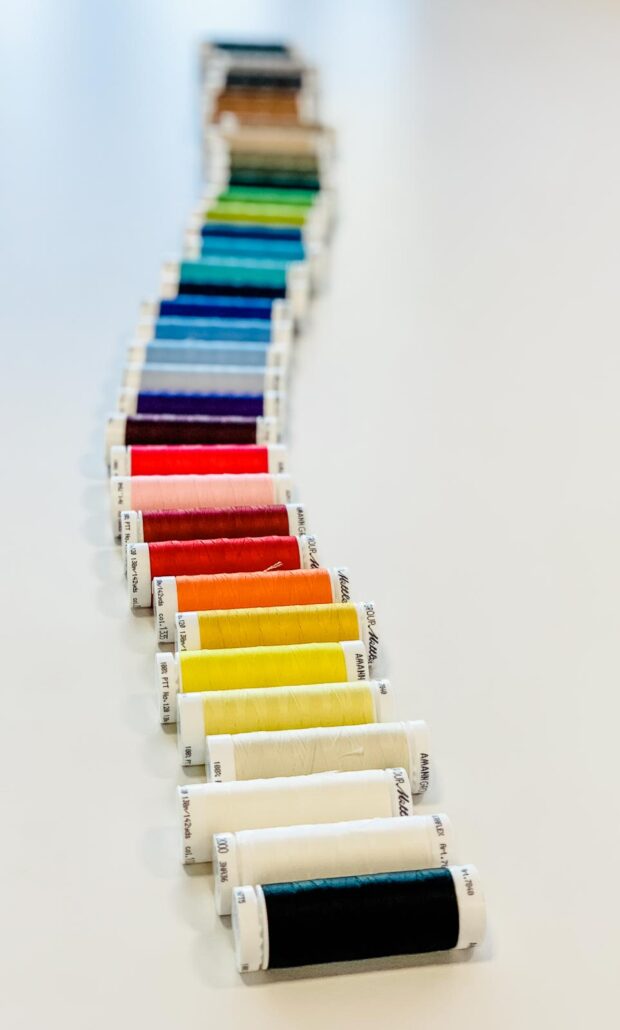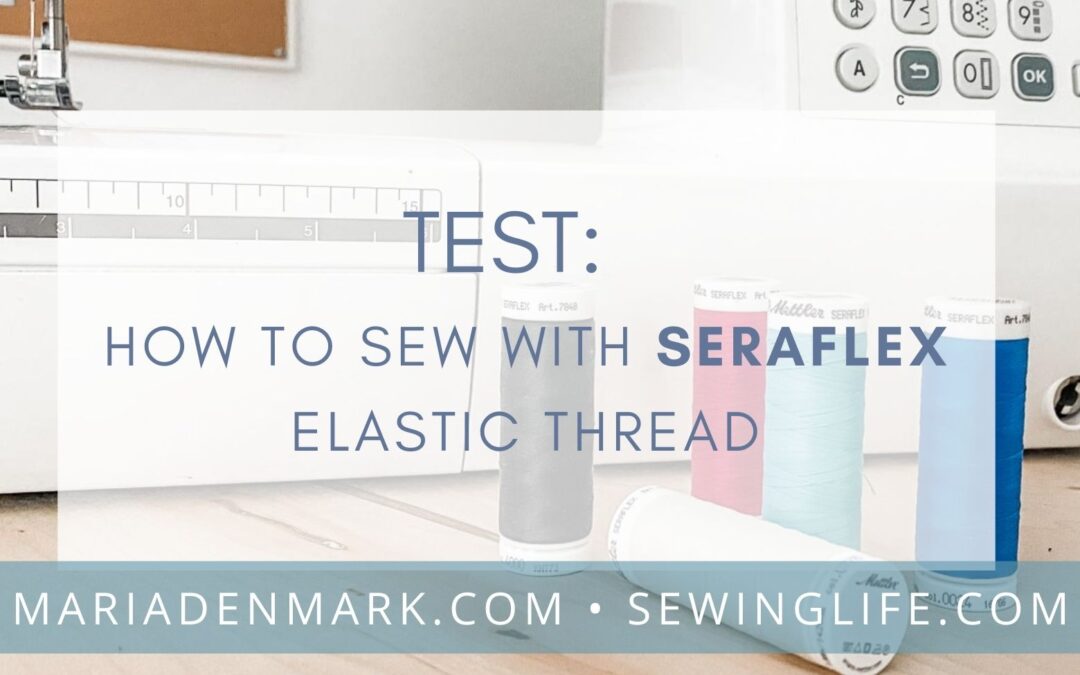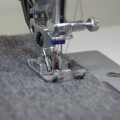IT’S A GAME-CHANGER!
This article was originally published in Sewing Life Magazine 12 which comes with The Lammefjord Dress Sewing Pattern.
How to use Searaflex – the new elastic thread – when sewing jersey!
One of the things that’s always annoyed me when sewing knits on a sewing machine is that hems and neckline edges always have to be stitched with a stretch stitch to both look fine and not pop when you at some point inadvertently overstretch the garment while taking it off.
I do use my overlocker for most seams when sewing knits. But sometimes, especially when sewing dresses with details, it’s nice to be able to do a straight stitch. The problem is – those seams might pop.
Enter Mettler (a company with Aaman group) and the brand new Seraflex thread.
Full disclosure: I first heard of this thread from Ann from Gorgeous Fabrics, and she gave me a spool to try out. When I approached Mettler to find out more about the thread, they send me 5 spools as well. All opinions are my own and I did not get paid to write this article.

WHAT IS SERAFLEX THREAD, AND WHAT MAKES IT SPECIAL?
According to Mettler,Seraflex thread is groundbreaking because it can be sewn in a straight stitch and still be elastic.
It is spun from PTT (Polytrimethylenetereph-thalate). According to a manufacturer, this man-made polyester combines the chemical resistance characteristics that you can get from a polyester with the elastic recovery and resilience of nylon.
That means that it has all the strength of your typical polyester thread but has the extra quality that it’s stretchable. According to Mettler, it stretches up to 65 % !
The first impression of the thread is that it is smooth with no fluff. It’s soft, and when I pull the thread, it stretches slightly, then recovers without kinking.
I mean, it’s SUPER smooth! Compare to my regular thread in the picture (Seraflex in the front). You can really see the difference / and I owe it to say that my standard thread is good quality, that actually doesn’t shed much fluff!

HOW TO SEW WITH SERAFLEX ELASTIC THREAD:
You use Seraflex thread in both the needle and the bobbin thread. When winding the bobbin, make sure you don’t overstretch the thread:
Wind slowly, and if your machine has many tension guides in the winding path, maybe skip one of them (mine only has one, so I didn’t try that).
Alternatively, I guess you could hold the thread in the hand or even wind the bobbin by hand

Because the thread is so smooth and slippery, it’s good to be mindful of a few things in the threading and sewing process as well:
Double-check that the thread goes into the tension guides and stays there. It might slip out – so keep an eye on that.
Also – go slow(er) so that the thread elasticity can keep up with the speed.
And lastly: In order for the thread to stretch when worn, it’s important to not stretch it (too much) when you sew it. To avoid that, we need to use the lowest thread tension possible, where we still get an excellent working stitch.
Mettler recommends needle size from 70-80 – which should be standard for most of ýour knit sewing, anyway. And use a stretch needle!
TESTING 1-2-3
I tested the thread with 4 different settings to see which got the best results.
I am looking for well-tensioned stitches (no loops!) and stretchability.

I tested the thread with 4 different settings to see which got the best results.
I am looking for well-tensioned stitch-es (no loops!) and stretchability.
Since Mettler recommends going as low in thread tension as you can, my goal is to find the setting that gets me the lowest tension while still looking fine and holding up.
To test the stretchability, I’ve marked 5 cm (2”) on a piece of paper and will use that to measure stretch percentage.
Scroll for results:
Pink Pins:
This is my control setting. I am using my regular thread-tension (4 on my machine) and straight stitch 2.5 long.
The 5 cm piece of fabric stretches to 6.2 cm, which means it stretched 1.2 cm or almost 24 %.
The stitches look good but feel tight.

Purple pins:
Same stitch length, but with the tension set to 2.
The 5 cm stretches 1.7 cm, which is equivalent to 34 %.
Stitches still look fine but they feel tight.

Green Pins:
Well, let’s try something different!
I turned the tension way down to 0.5!
Stitch length is the same.
The stitches look a little wavy but not too bad.
And when stretched, the seam stretches 3 cm! That is the same as 60%!

Blue Pins:
For my almost-final test, I am setting the thread tension to 1 and lengthening the stitch length to 3 to see how that turns out.
Stitches look good (I like the longer stitch look), but the stretch is now 2.6 cm, which corresponds to 52%.
So I am going to try just one more setting….

White pins:
This is where I try to learn from my previous tests:
I am going with 0.5 thread tension and a stitch length of 3.
And the result is: It stretches 3 cm = 60% (so the stretch is the same as for the green-pin sample).
I haven’t decided which stitch length I prefer, and it probably also depends on the exact fabric.
PS. I also tried going down to 0 thread tension. That stitch couldn’t hold together. You do need some tension to not fall a part!

IN CONCLUSION:
I like the results – and will definitely use the Seraflex elastic thread for things like sewing on a neckline binding on the sewing machine or topstitching a facing like the one on the Lammefjord dress! So I think it’s a great tool to add to your sewing box!
Mettler is right when they recommend going low on thread tension – and it didn’t affect the look or durability of the stitch much.
I would recommend that you do your own tests on scraps so that you know what tension works best with your sewing machine and fabric!
The full range of the Mettler Seraflex thread is available on the Gorgeous Fabrics site for shipping to the US. In Europe, you will find Seraflex in most places that sell the Amann thread series – which is widely available.








Trackbacks/Pingbacks